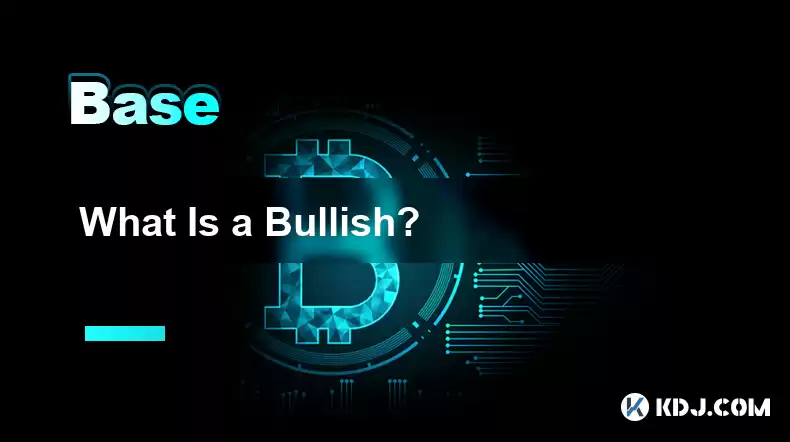-
 Bitcoin
Bitcoin $115000
0.12% -
 Ethereum
Ethereum $3701
4.50% -
 XRP
XRP $3.081
2.99% -
 Tether USDt
Tether USDt $0.0000
-0.01% -
 BNB
BNB $767.9
1.45% -
 Solana
Solana $169.5
3.13% -
 USDC
USDC $0.9999
0.01% -
 Dogecoin
Dogecoin $0.2106
4.30% -
 TRON
TRON $0.3334
1.62% -
 Cardano
Cardano $0.7564
2.54% -
 Stellar
Stellar $0.4165
0.76% -
 Hyperliquid
Hyperliquid $38.75
0.25% -
 Sui
Sui $3.593
3.00% -
 Chainlink
Chainlink $17.08
3.59% -
 Bitcoin Cash
Bitcoin Cash $573.6
4.35% -
 Hedera
Hedera $0.2508
-0.84% -
 Avalanche
Avalanche $23.07
6.46% -
 Ethena USDe
Ethena USDe $1.001
-0.02% -
 Litecoin
Litecoin $120.8
8.17% -
 UNUS SED LEO
UNUS SED LEO $8.943
-0.32% -
 Toncoin
Toncoin $3.400
-5.60% -
 Shiba Inu
Shiba Inu $0.00001255
1.54% -
 Uniswap
Uniswap $9.908
6.32% -
 Polkadot
Polkadot $3.718
2.10% -
 Monero
Monero $303.0
-0.74% -
 Dai
Dai $0.9999
-0.02% -
 Bitget Token
Bitget Token $4.392
0.91% -
 Cronos
Cronos $0.1403
6.31% -
 Pepe
Pepe $0.00001076
1.13% -
 Aave
Aave $267.2
1.80%
What Is a Bullish?
In the realm of cryptocurrency, a Bullish market is characterized by consistently rising prices, high trading volume, and positive investor sentiment, offering potential opportunities for profit through buy-and-hold, trend following, or leveraged trading strategies.
Dec 16, 2024 at 05:01 pm

Key Points:
- Understanding the concept of a "Bullish" in cryptocurrency.
- Characteristics and indicators of a Bullish market.
- Strategies for trading during a Bullish phase.
- Identifying the phases of a Bullish market and potential risks.
- Frequently asked questions and answers related to Bullish markets.
What Is a Bullish?
In the cryptocurrency realm, a Bullish market refers to a period of sustained price increases and investor optimism. It is characterized by increased trading volume, market liquidity, and an overall positive sentiment among market participants. Bullish markets are driven by factors such as increased demand, positive news, and speculations of future growth.
Characteristics of a Bullish Market:
- Rising Prices: Prices of cryptocurrencies consistently increase over time, with minimal to moderate pullbacks.
- High Trading Volume: Trading volume increases significantly, indicating increased buying and selling activity by investors.
- Increase in Market Cap: The total market capitalization of the cryptocurrency market rises as the prices of individual cryptocurrencies appreciate.
- Positive Sentiment: Traders and investors are optimistic about the future of the cryptocurrency market, fueling further buying and price increases.
- Strong Support Levels: Prices find support at higher levels, preventing sharp declines.
Strategies for Trading in a Bullish Market:
- Buy-and-Hold: Invest in cryptocurrencies with strong fundamentals and long-term growth potential. Hold onto these investments for the duration of the Bullish run.
- Trend Following: Ride the momentum of rising prices by buying cryptocurrencies that are trending upward and holding them as long as the trend continues.
- Scalping: Profit from small price movements by quickly buying and selling cryptocurrencies within a short time frame. This strategy requires quick decision-making and risk management skills.
- Leveraged Trading: Employ margin or leverage to amplify profits but also increase risks. Leverage should be used cautiously and only by experienced traders.
Phases of a Bullish Market:
- Early Bullish: Prices begin to rise, but the market is still relatively volatile.
- Mid Bullish: Prices continue to climb steadily, with moderate pullbacks.
- Late Bullish: Prices reach their peak, and the market enters a state of euphoria or FOMO (fear of missing out).
Risks of a Bullish Market:
- Market Corrections: Bullish markets are not always smooth, and corrections or price pullbacks can occur.
- Euphoria and FOMO: Extreme optimism can lead to investors making impulsive decisions and buying at inflated prices.
- Bubble Formation: Unsustainable price increases without strong fundamentals can result in a market bubble, which can eventually burst.
FAQs Related to Bullish Markets:
Q: What are some indicators that a Bullish market is starting?
A: Rising prices, increasing trading volume, positive news, and a rise in market capitalization.
Q: How long do Bullish markets typically last?
A: The duration of a Bullish market can vary, but they typically persist for several months to years.
Q: What are some strategies to mitigate risks in a Bullish market?
A: Invest in cryptocurrencies with strong fundamentals, use stop-loss orders to limit losses, and avoid making emotional decisions based on FOMO.
Q: Can a Bullish market turn into a Bearish market?
A: Yes, a Bullish market can transition into a Bearish market characterized by falling prices and pessimism. However, this transition is not always sudden and can take some time to unfold.
Disclaimer:info@kdj.com
The information provided is not trading advice. kdj.com does not assume any responsibility for any investments made based on the information provided in this article. Cryptocurrencies are highly volatile and it is highly recommended that you invest with caution after thorough research!
If you believe that the content used on this website infringes your copyright, please contact us immediately (info@kdj.com) and we will delete it promptly.
- Velo Universe, DEX, and DeFi Security: Navigating the Future of Decentralized Trading
- 2025-08-05 09:25:13
- Bitget Wallet Revolutionizes Solana with Gas-Free Transactions: A New Era for DeFi
- 2025-08-05 09:25:13
- Ozak AI, Crypto Boom, and ROI Potential: Is This the Next Big Thing?
- 2025-08-05 09:25:24
- Solana's ETF Hopes & the All-Time High Chase: Is SOL Set to Soar?
- 2025-08-05 09:25:24
- Coinbase's Brian Armstrong and the Art of Focused Work: A Deep Dive
- 2025-08-05 09:25:30
- Uniswap Price Prediction: Bullish Reversal on the Horizon?
- 2025-08-05 09:25:30
Related knowledge

What is the difference between CeFi and DeFi?
Jul 22,2025 at 12:28am
Understanding CeFi and DeFiIn the world of cryptocurrency, CeFi (Centralized Finance) and DeFi (Decentralized Finance) represent two distinct financia...

How to qualify for potential crypto airdrops?
Jul 23,2025 at 06:49am
Understanding What Crypto Airdrops AreCrypto airdrops refer to the distribution of free tokens or coins to a large number of wallet addresses, often u...

What is a crypto "airdrop farmer"?
Jul 24,2025 at 10:22pm
Understanding the Role of a Crypto 'Airdrop Farmer'A crypto 'airdrop farmer' refers to an individual who actively participates in cryptocurrency airdr...

What is the difference between a sidechain and a Layer 2?
Jul 20,2025 at 11:35pm
Understanding the Concept of SidechainsA sidechain is a separate blockchain that runs parallel to the main blockchain, typically the mainnet of a cryp...

What is the Inter-Blockchain Communication Protocol (IBC)?
Jul 19,2025 at 10:43am
Understanding the Inter-Blockchain Communication Protocol (IBC)The Inter-Blockchain Communication Protocol (IBC) is a cross-chain communication protoc...

How does sharding improve scalability?
Jul 20,2025 at 01:21am
Understanding Sharding in BlockchainSharding is a database partitioning technique that is increasingly being adopted in blockchain technology to enhan...

What is the difference between CeFi and DeFi?
Jul 22,2025 at 12:28am
Understanding CeFi and DeFiIn the world of cryptocurrency, CeFi (Centralized Finance) and DeFi (Decentralized Finance) represent two distinct financia...

How to qualify for potential crypto airdrops?
Jul 23,2025 at 06:49am
Understanding What Crypto Airdrops AreCrypto airdrops refer to the distribution of free tokens or coins to a large number of wallet addresses, often u...

What is a crypto "airdrop farmer"?
Jul 24,2025 at 10:22pm
Understanding the Role of a Crypto 'Airdrop Farmer'A crypto 'airdrop farmer' refers to an individual who actively participates in cryptocurrency airdr...

What is the difference between a sidechain and a Layer 2?
Jul 20,2025 at 11:35pm
Understanding the Concept of SidechainsA sidechain is a separate blockchain that runs parallel to the main blockchain, typically the mainnet of a cryp...

What is the Inter-Blockchain Communication Protocol (IBC)?
Jul 19,2025 at 10:43am
Understanding the Inter-Blockchain Communication Protocol (IBC)The Inter-Blockchain Communication Protocol (IBC) is a cross-chain communication protoc...

How does sharding improve scalability?
Jul 20,2025 at 01:21am
Understanding Sharding in BlockchainSharding is a database partitioning technique that is increasingly being adopted in blockchain technology to enhan...
See all articles

























































































